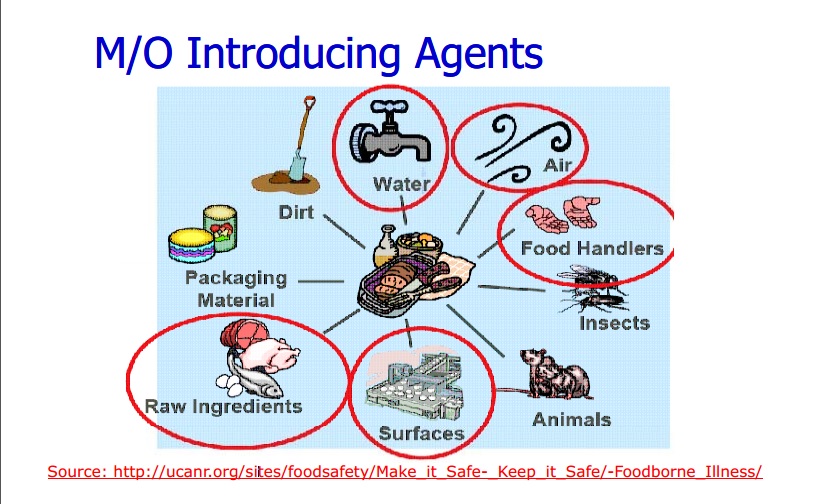Introduction to food microbiology
|
History of food microbiology have been studied for hundreds of years. Many remarkable findings and researches in food microbiology were conducted, which affected our modern daily lives. These discoveries, for example, were pasteurization by Pasteur in 1866 and canning by Appert, father of canning, in 1810. Microorganisms are considered as one of the biological hazards. So why does the study of food microbiology is important? the answers are as follow:
The above figure shows some common sources of microorganisms that can contaminate food products we eat everyday. The circled sources are most likely where microbes come from.
|
ในหัวข้อนี้ส่วนใหญ่แล้วก็จะพูดถึงเกี่ยวกับรายวิชานี้แบบคร่าวๆ นะครับ สิ่งที่สำคัญเลย ที่อาจออกข้อสอบก็ คือ ทำไมการศึกษา food microbiology มันถึงสำคัญละ ทำไมเราต้องเรียน จากที่ผมเน้นไว้เลยครับตัวสีแดงๆทั้งหมด 4 ข้อ
|
References
Ray, B. 2005. Fundamental food microbiology. 3rd ed. CRC Press NY. CRC Press, NY. 603p.
Jay, JM. 2000. Modern Food Microbiology. 6th ed. Aspen Publishers, I MLnc. ML, 635p.
Adams, MR., and Moss, MO. 2000. Food Microbiology. 2nd ed. RS.C.479p.
Ray, B. 2005. Fundamental food microbiology. 3rd ed. CRC Press NY. CRC Press, NY. 603p.
Jay, JM. 2000. Modern Food Microbiology. 6th ed. Aspen Publishers, I MLnc. ML, 635p.
Adams, MR., and Moss, MO. 2000. Food Microbiology. 2nd ed. RS.C.479p.

